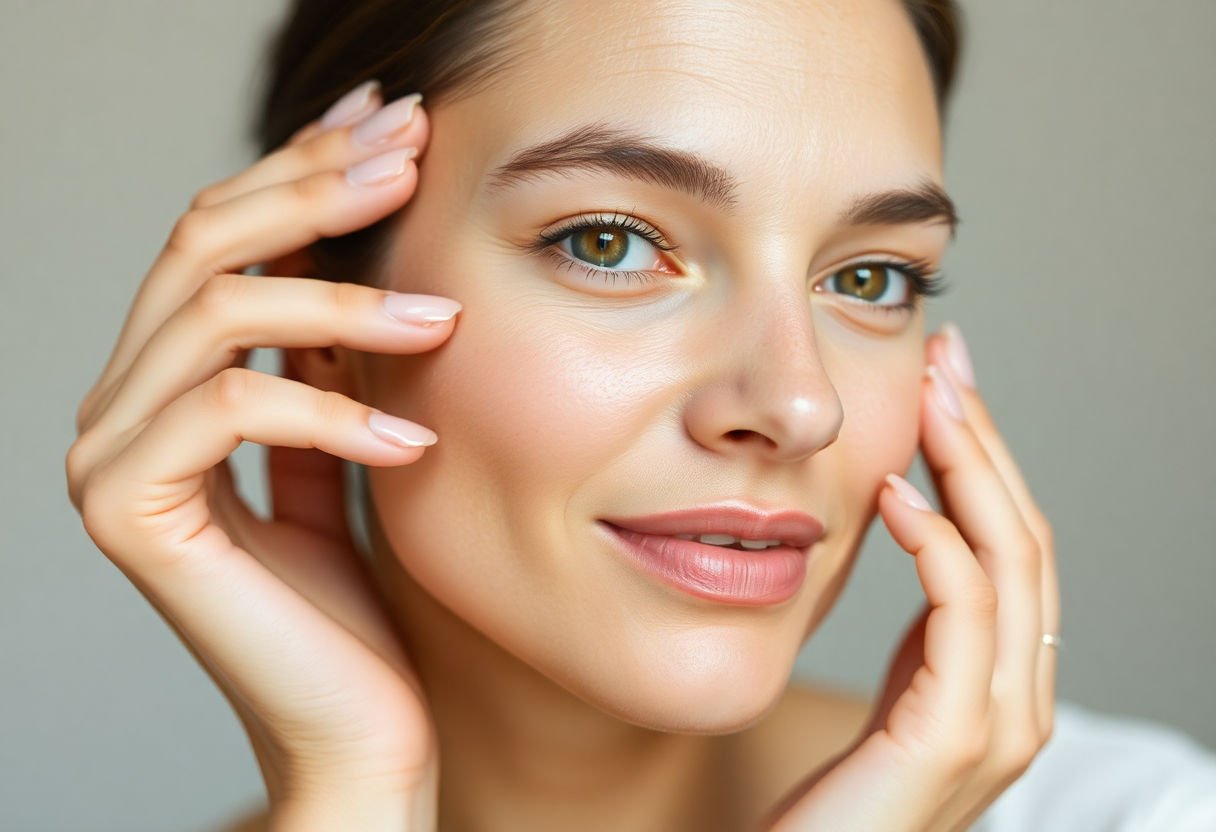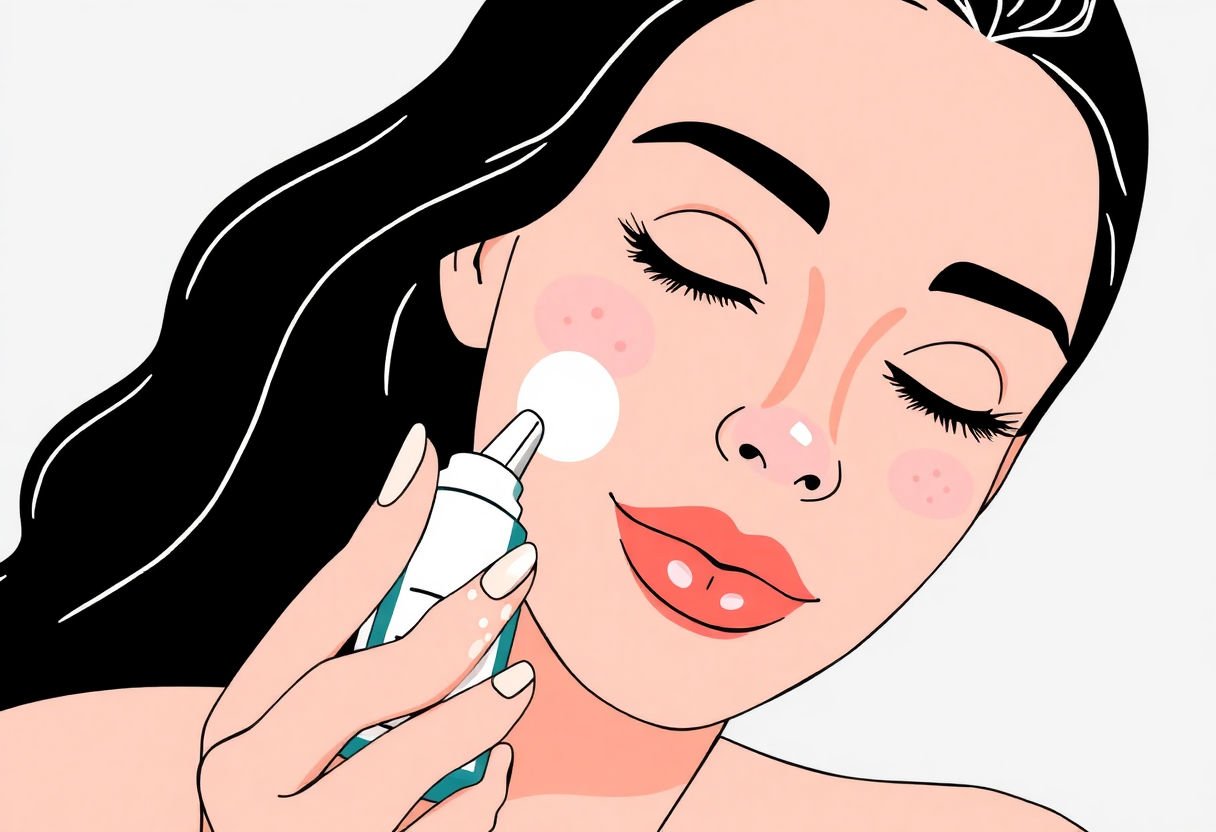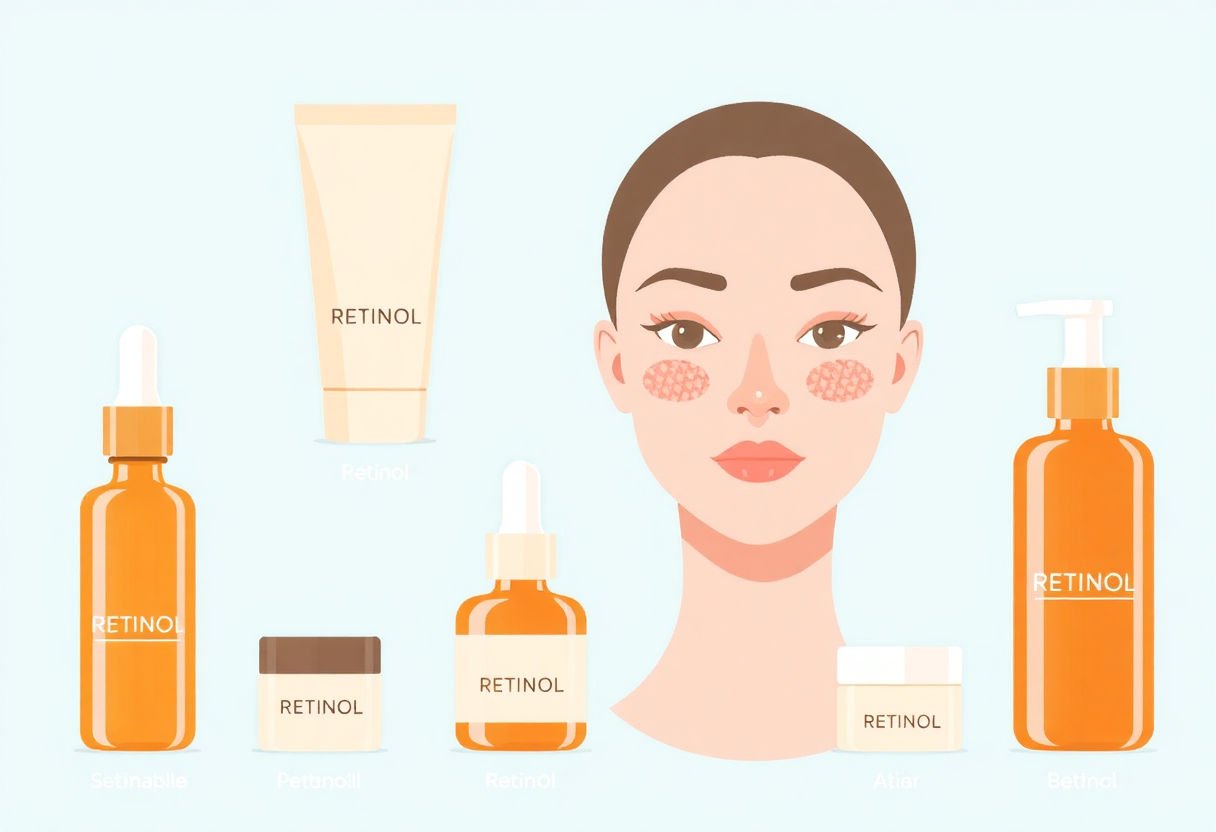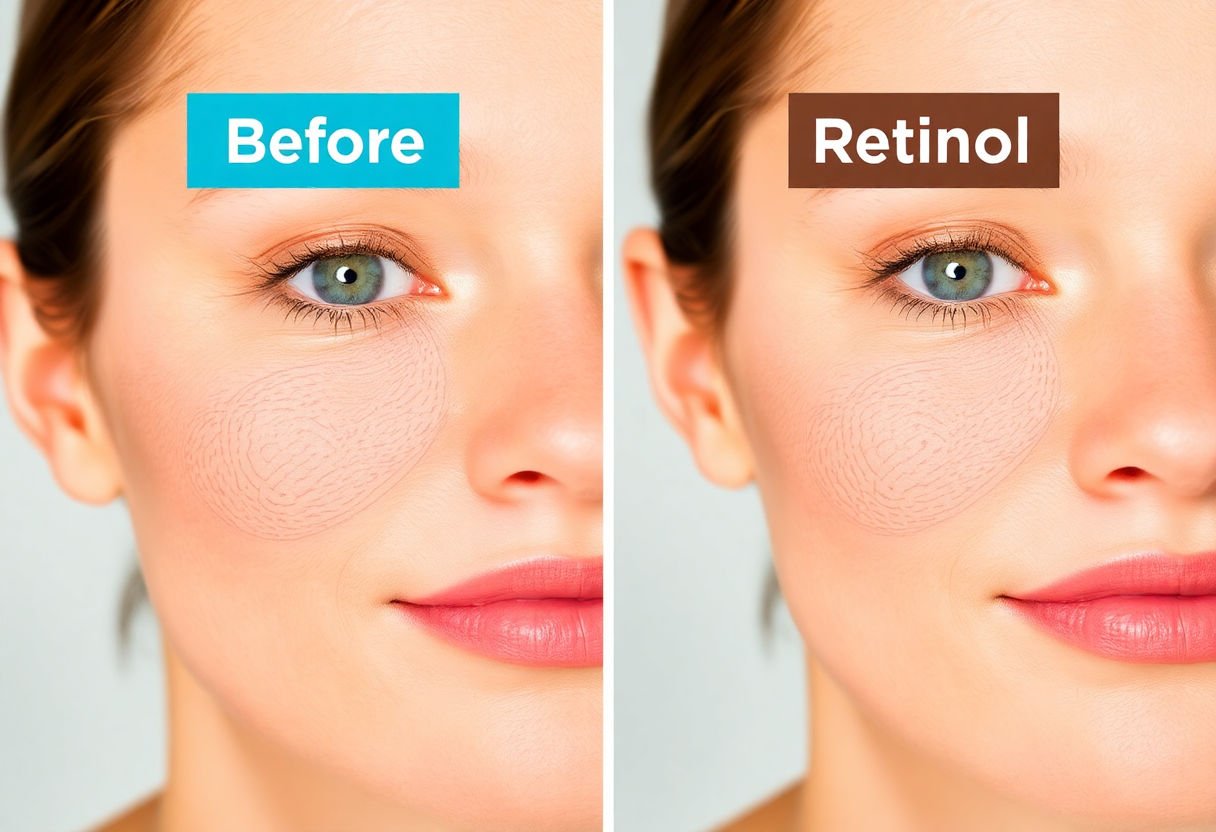Smooth and bright skin feels wonderful. Using retinol can transform your skincare routine. Many people think of retinol for the face, but it works wonders on the body too. It enhances skin texture, boosts radiance, and minimizes aging signs. Learn about types of retinol, how to use it effectively, and safe practices. Discover how to choose the right product for your skin type and pair it with other ingredients. Arm yourself with knowledge on potential side effects and solutions. Get ready to integrate retinol into your body care routine and enjoy healthier skin.
Key Takeaways
- Retinol improves skin texture and tone with regular use in body care.
- Applying retinol minimizes visible signs of aging such as wrinkles and fine lines.
- Choose the right retinol product for your skin type to prevent irritation.
- Combine retinol with other skincare ingredients for enhanced benefits.
- Follow safety guidelines for retinol application to maintain skin health.
Understanding Retinol: A Skincare Powerhouse

Retinol, a form of Vitamin A, works like a superstar in the skincare world. It often leads the pack in beauty routines. But what makes it so special? Retinol renews skin cells, fights off dullness, and supports a glowing complexion. Retinol comes in three main types: retinyl palmitate, retinol, and retinaldehyde. Retinyl palmitate, the gentlest form, suits sensitive skin. Retinol, the most common type, balances effective results with moderate potency. Retinaldehyde works faster because it converts to retinoic acid quickly, delivering visible improvements sooner.
Why do experts praise retinol? Picture peeling an orange to reveal the juicy fruit inside. Retinol works similarly. It brings fresh skin to the surface. This process reduces fine lines, wrinkles, and dark spots. Unlike harsh treatments, retinol gradually transforms skin, leading to continuous improvement over time. Retinol also helps unclog pores, reducing breakouts—an added bonus for teens.
For the best results, apply retinol before bed. Start slowly, using it a few nights a week. As your skin adjusts, increase usage. Remember to pair it with a moisturizer to keep skin soft. Sunscreen is a must; new skin is more sensitive to sunlight.
In essence, consider retinol a long-term partner for skin care. With patience and regular use, the benefits become clear. Bright, smooth, and youthful skin awaits those who embrace its power.
Benefits of Retinol for the Body

Retinol, known for its skin-loving powers, benefits more than just the face. It helps the body, too. You may ask, how? Here are the key points.
Smoother Skin
Retinol gently clears away dead skin cells. Think of it like a mild scrub without the harsh rubbing. This helps new skin come to the surface. Skin feels soft and smooth.
Even Skin Tone
Retinol helps to lighten dark spots over time. It works by reducing the appearance of uneven skin tone. Imagine a canvas getting evened out to perfection.
Firming Effect
Over time, the skin can lose its bounce. Retinol helps by boosting collagen, the stuff that keeps skin firm. It’s like giving skin a little workout to keep it strong.
Reducing Fine Lines
While fine lines are a sign of wisdom, retinol can help to make them less visible. It smooths out these lines by nourishing the skin.
Moisture Balance
Retinol works well with moisturizers. While it clears the old skin, it also helps the skin to keep moisture in. This is very helpful during colder months.
Retinol is clever. It addresses multiple skin concerns. Think of it as a multitasker in your skincare routine. With regular use, your body skin can look and feel its best. Always remember to wear sunscreen during the day for added protection.
How to Incorporate Retinol into Your Body Care Routine

To add retinol to your body care steps, begin slowly. Start once or twice a week. This lets your skin adjust gently.
Cleanse Your Skin
Begin with clean, dry skin. Use a mild cleanser. Avoid harsh soaps. They might strip the skin.
Choose the Right Product
Pick a body lotion with retinol. Look for creams that suit your skin. Sensitive skin needs a low retinol level. Normal skin can handle a bit more.
Apply Sparingly
A small amount goes a long way. Use a pea-sized dab for each arm or leg. Spread it evenly. Be gentle.
Moisturize Well
Moisture is key. After retinol, seal it with a good moisturizer. This helps prevent dryness.
Watch for Side Effects
Look out for redness or peeling. If it happens, reduce use. Give your skin time to calm down.
Protect Your Skin
Retinol can make skin sensitive to the sun. Use sunscreen daily. Look for SPF 30 or higher.
Stay Consistent
Consistency brings results. Over time, your skin becomes smoother and clearer. Adjust frequency as your skin adapts.
These steps help you use retinol safely and effectively. Enjoy the benefits it brings to your body care routine.
Choosing the Right Retinol Product for Your Skin Type

Choosing the right retinol product can feel like finding the perfect shoe. Not every pair fits every foot. Let’s make it simpler.
Skin Type Matters
- Dry Skin: Look for cream-based retinol. Creams add moisture. This helps prevent drying out.
- Oily Skin: Go for a gel-based retinol. Gels feel lighter. They do not clog pores.
- Sensitive Skin: Choose retinol with added ingredients like aloe or hyaluronic acid. These soothe skin.
Strength of Retinol
- Starter: Begin with a lower concentration. Look for products labeled 0.25% or 0.5%. Less chance of skin peeling or redness.
- Experienced Users: Gradually increase to higher strengths. 1% works well for tougher skin.
Consider Product Additions
- Seek out fragrance-free and dye-free options. Fragrances can irritate. Dyes might cause allergies.
- Products with antioxidants are good. They support skin repair and boost results.
Testing is Key
- Always patch test a new product. Try applying a small amount on your wrist first.
- Wait 24 hours. Check for redness or itchiness.
Quotes from dermatologists emphasize starting slow. “Taking time helps your skin adjust,” suggests one expert. Skin adaptation helps achieve better results.
Remember, choosing the right retinol involves knowing your skin. A little patience can go a long way to achieve a smoother, brighter look.
Common Side Effects and How to Mitigate Them

When you start using retinol, you might notice some common side effects. You can usually manage these with some simple steps.
One common side effect is dry skin. Retinol can sometimes cause skin to lose moisture. To tackle this, use a good moisturizer. Look for one with ingredients like glycerin or hyaluronic acid. Apply it after using retinol.
You might also see redness or irritation. This happens sometimes when your skin is adjusting to retinol. To ease this, apply retinol only a few times a week at first. Allow your skin to adjust slowly. Over time, increase usage as your skin tolerates it.
Another side effect could be peeling. Like a mild sunburn, skin may look flaky. Gentle exfoliation can help remove dead skin cells. Do this no more than twice a week.
Sun sensitivity can increase with retinol use. Your skin may burn more easily in the sun. Using sunscreen is key here. Apply it every morning, even if staying indoors. Protect your skin from harmful UV rays.
Itchy skin can also occur. If your skin feels itchy, opt for skincare products with calming ingredients like aloe vera. Avoid hot showers which can worsen itching.
With these steps, you can handle most retinol side effects. They usually lessen with regular use and proper care. Remember to listen to your skin. If you find side effects persist, it might be helpful to consult with a dermatologist.
Retinol and Its Role in Anti-Aging
Retinol serves as a key factor in fighting off signs of aging. It acts by speeding up skin cell turnover. This helps in shedding old cells to make room for new ones. So, you get smoother and fresher skin over time.
Retinol reduces wrinkles. It boosts collagen production, which makes the skin firm. Imagine a bouncy rubber band instead of an old stretched-out one. You see fewer wrinkles and fine lines.
Retinol evens out skin tone. Dark spots and discoloration become less noticeable. After regular use, your skin looks bright and youthful.
Retinol improves texture. It smooths out rough patches. This makes your skin feel soft and fresh. You touch your arm, and it feels like touching silk.
You can use retinol on your body just like on your face. Apply it to your arms, legs, or any area where you notice aging signs. Start with a small amount to see how your skin reacts.
Use it at night. Your skin repairs itself while you sleep. Retinol works with this process, enhancing the results.
Retinol does more than just heal existing issues. It also helps in preventing new signs of aging. When you add it to your skincare routine, you protect your skin. You build a strong defense against the passing years. Readers benefit from younger-looking, vibrant skin with consistent use.
Safety Guidelines for Retinol Use
To use retinol safely on your body, start with a low concentration. This prevents irritation. A 0.25% or 0.5% retinol cream is a good choice. Use it twice a week at first. Your skin needs time to adjust. As your skin gets used to it, you can apply it more often.
Apply in the evening. Retinol makes your skin sensitive to the sun. Use it at night to avoid this. Always apply a broad-spectrum sunscreen during the day. Protect your skin from UV rays.
Avoid using too much. A pea-sized amount is enough for large areas like your arms or legs. More does not mean better. Applying too much can cause redness and peeling.
Keep your skin hydrated. Retinol can dry out your skin. Use a gentle moisturizer daily. This keeps your skin smooth and lessens any flaking.
Listen to your skin. If you notice redness or itchiness, reduce use. Allow your skin time to recover before trying again. Seek advice from a dermatologist if discomfort persists.
When using other products, be cautious. Avoid harsh scrubs or skincare with acids during retinol use. This prevents further irritation.
By following these steps, you keep your skin happy and healthy. Retinol can work wonders with care and patience. Your skin will thank you.
Pairing Retinol with Other Skincare Ingredients
Pairing retinol with other skincare ingredients can boost results. Think about how peanut butter and jelly make a perfect sandwich. Some ingredients work better together.
-
Hyaluronic Acid: This is like a drink of water for your skin. It hydrates and soothes. Use it with retinol to keep your skin soft. Retinol can dry out the skin a bit, so this helps.
-
Vitamin C: Think of this like an energy drink for the skin. It brightens and protects. Use it in the morning. Retinol works best at night.
-
Niacinamide: This is great for calming the skin. Think of it as a cool breeze on a hot day. It reduces redness and helps with dry skin. Pair it with retinol for smoother skin.
-
Sunscreen: This is super important with retinol use. Think of sunscreen like a shield. It protects the skin from the sun. Use it every day. Retinol makes the skin more sensitive to sunlight.
While pairing, remember to start slow. Let your skin get used to each product. Listen to your skin like you would your favorite song. If something feels wrong, stop.
Conclusion
Using retinol in your body care routine can make a big difference. It helps improve skin texture and reduce signs of aging. When used right, it brightens and smoothens the skin. It’s crucial to choose the right retinol product and start slowly to avoid irritation. By pairing retinol with other skincare ingredients, its benefits can increase. Consider adding retinol to your routine for healthier skin. It holds the power to transform how your skin looks and feels. Step by step, it paves the way for glowing, youthful skin.
Frequently Asked Questions
What does retinol do for your body skin?
Retinol helps improve skin texture and tone. It may make your skin look smoother and brighter.
Can retinol be used on sensitive skin?
Yes, but start with a low strength retinol product. Apply it every other day to see how your skin reacts.
How often should I apply retinol on my body?
Most people begin with once or twice a week. Increase use as your skin gets used to it.
Will retinol make my skin peel?
Some peeling is normal and shows it’s working. Moisturize often to keep skin comfortable.
Can I use retinol and other skincare products together?
Yes, but avoid mixing retinol with strong acids at the same time. This helps to lower irritation risk.
